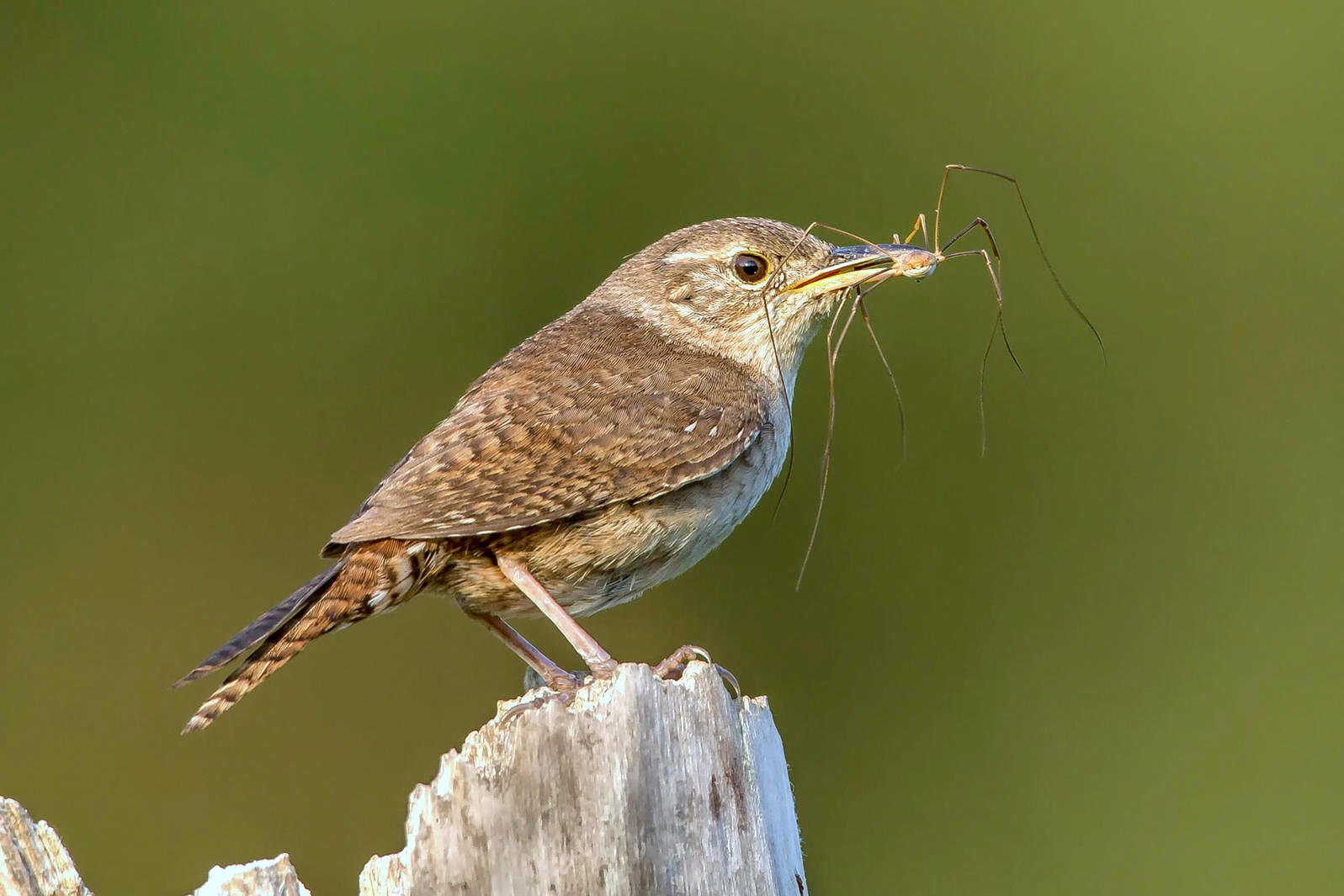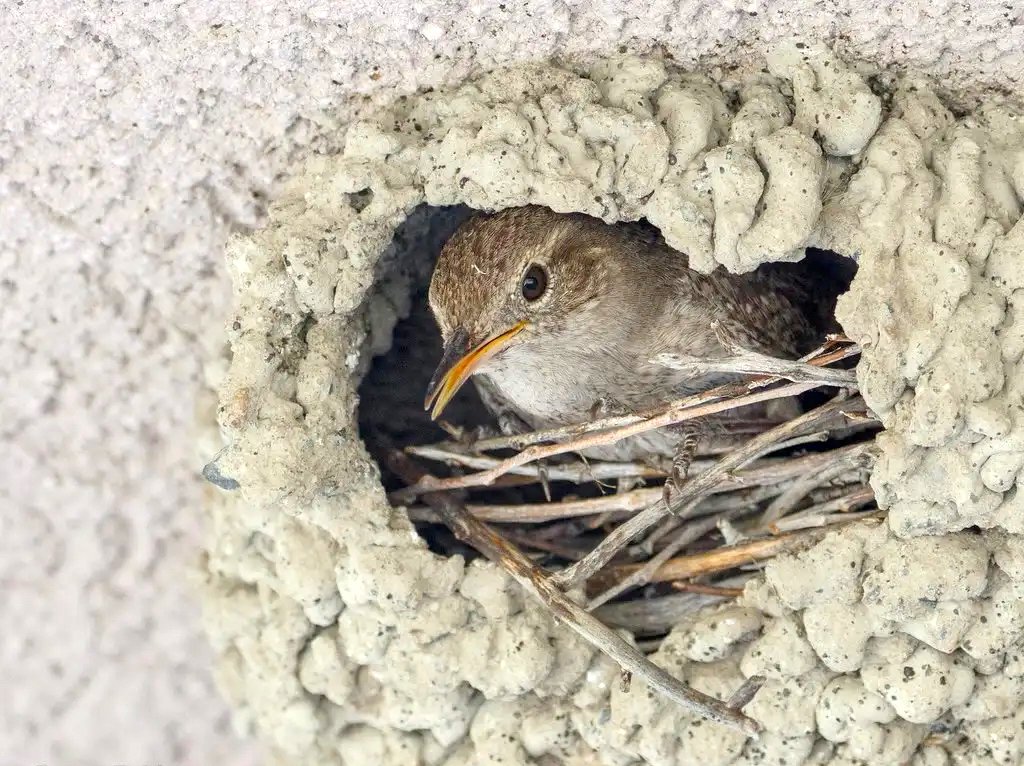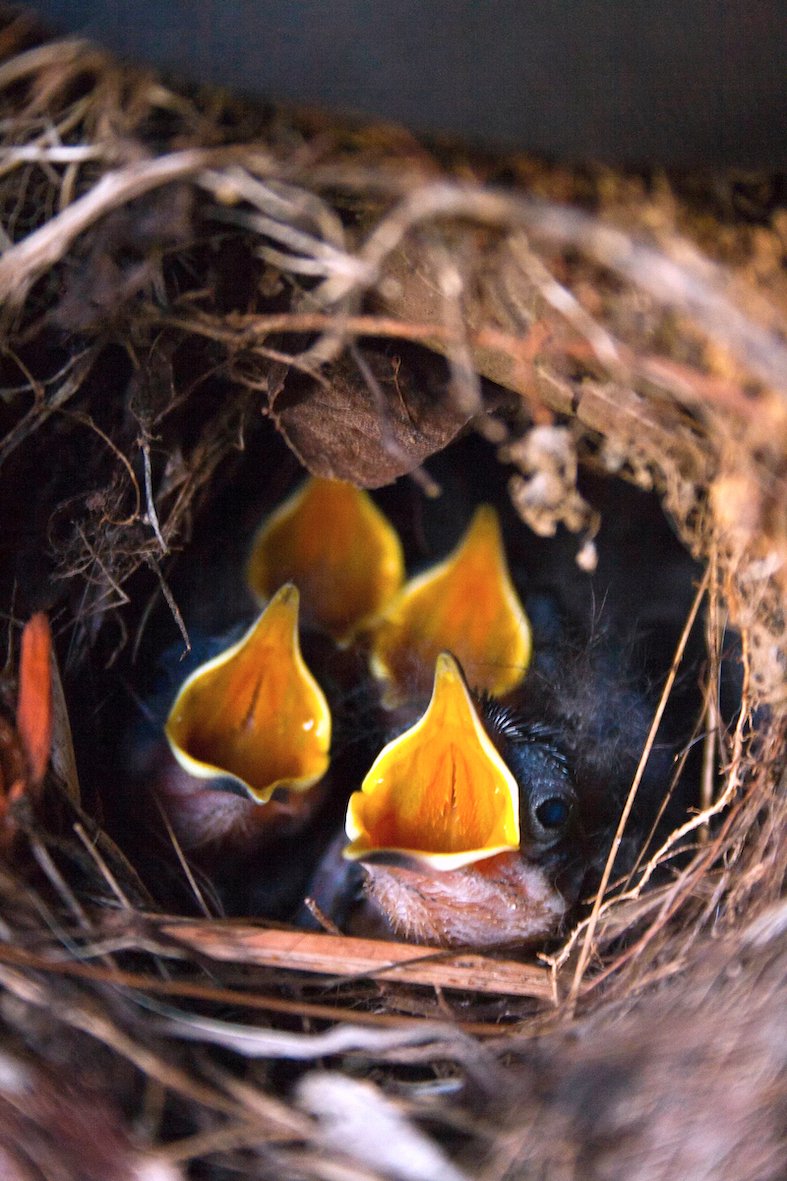2015 | Kutztown, USA
House wren (Troglodytes aedon) spider egg collecting
Today’s post is short and sweet. No, wait, not sweet. What’s that other word? Horrifying?
Itsy-bitsy tools
There’s nothing spooky about our tool user today. It’s the house wren, a small, brownish-grey bird with a cheerful nesting song and a habitat that spans the length of the Americas. The genus name—Troglodytes—comes from the Greek for cave dweller, referring to the wren’s preferred nesting sites in holes and crevices. It’s those nests that we’ll be focusing on, so here’s a male building his nest base in a hole made earlier by a cliff swallow:
We could spend some time here debating how similar nest-making is to tool use (the overlaps are considerable), but we won’t, because we need to get to what these cute little wrens sometimes deliberately scatter among all those nesting twigs and grass stems.
Spiders.
More specifically, little spider egg sacs that will hatch into hundreds of little spidery spiderlings. Crawling and skittering around the nest, amongst the wren’s own precious babies.
This is what those tiny white egg sacs looks like, pre-hatching, in a wren nest box in Connecticut:
Why do they do this? Is it a fun Halloween trick for their kids? Did the wrens lose a dare?
Science suggests a possible answer. The spiderlings don’t harm or bother the newborn wren chicks. But they have been seen attacking and eating any parasitic mites that they find. One hypothesis, therefore, is that by keeping the mite population down, the spiders end up helping the chicks get a healthier start to life. If true, this would be a fine example of one animal (the wren) using another animal (the spider) as a tool, in a similar way to us using a mousetrap or mop to keep our own homes free of vermin.
Unnatural additives
Wrens aren’t the only birds suspected of using other animals as a way of keeping their nests and babies tidy. This behaviour even has a name: heterospecific cleaning. For example, there are records of Eastern Screech-Owls (Otus asio) putting live blind snakes (Leptotyphlops dulcis) in their nests to prey on parasitic larvae that would otherwise munch on the little owlets.
The notion that spiderlings might be the roomba of the wren world has been around for several decades, but in 2015 Connor Gable and colleagues from Kutztown University in Pennsylvania, USA, decided to put it to the test. They monitored wrens in 72 nesting boxes, daily counting up the number of spider egg sacs and tracking the growth of baby wrens as they hatched into their arachnid-filled homes.
For context, here are some house wren chicks in Georgia, USA (spiders not included):
On average, the male nest builders added 40 spider egg cases to each nest during the breeding season. This was not some accidental inclusion—the wrens particularly brought spiders in during the final stages of nest construction. At that point, the females select which males they’d like to breed with, and the males set aside nest-building for mate-guarding and raising the kids.
So far, so good. All seems set for the spiders to hatch out and begin their clean-up duties. But this is where the hypothesis starts to unravel. Gable and his team found no evidence that the number of spider cases or actual spiderlings affected how many mites were running around the nests. The number of mites was enormous—averaging over 5500 per nest—so there was plenty of spider-food. What’s more, the little wren chicks growing up with more spidery eggs in their house weren’t any healthier than those that lived a more arachnid-free childhood. The hypothetical chain linking more spiders to fewer mites to stronger newborns just wasn’t there.
What does this mean? It could be that the male wrens brought in the wrong type of spiders: predatory jumping spiders and wolf spiders would have been best, but the most commonly added eggs in Kutztown were from the marbled cobweb spider. So perhaps instead the eggy additives were a signal from the male to female wrens, showing that he cared enough to bring many many creepy crawlies into the home? Again, this idea doesn’t hold up, with earlier work unable to link female choice with a male’s ability to put spiders in the nest. The egg sacs might conceivably have held the nest together, or helped to hide it from view, but house wrens build only inside cavities, where neither cohesion nor concealment are necessary.
Which leaves us at an interesting impasse. It may be that certain types of spiders really do help keep mite numbers down, or they did in the recent-enough past that the activity persists. Perhaps the most important outcome for us, however, is to recognise that we don’t need to understand the function of a behaviour for it to have some use for the animals involved. House wren spider-collections can still be tool use even if we humans aren’t in on the secret of how it works. One day we may work it out, or we may not, but that really doesn’t matter to the wrens. Their main interest is is making sure that the next generation fledges and thrives, and they’re doing that just fine.
Sources: Gable et al. (2019) Do House Wrens add spider egg cases to their nests for heterospecific cleaning? Canadian Journal of Zoology 27: 50-56. || Gehlbach, F. & R. Baldridge (1987) Live blind snakes (Leptotyphlops dulcis) in eastern screech owl (Otus asio) nests: a novel commensalism. Oecologia 71: 560–563. || Eckerle, K., & C. Thompson (2004) Addition of arthropod cocoons to house wren nests is correlated with delayed pairing. Behavioural Ecology 16: 1–7.
Main image credit: Nick Shearman; https://rockies.audubon.org/blog/bird-of-the-week/house-wren || Second image credit: Peter Hart; https://www.saltergrove.org/house-wren/ || Third image credit: Ellen F.; https://www.flickr.com/photos/hickamorehackamore/9259713159/ || Fourth image credit: Bert Cash; https://www.audubon.org/field-guide/bird/house-wren || Fifth image credit: https://www.reddit.com/r/birdpics/




